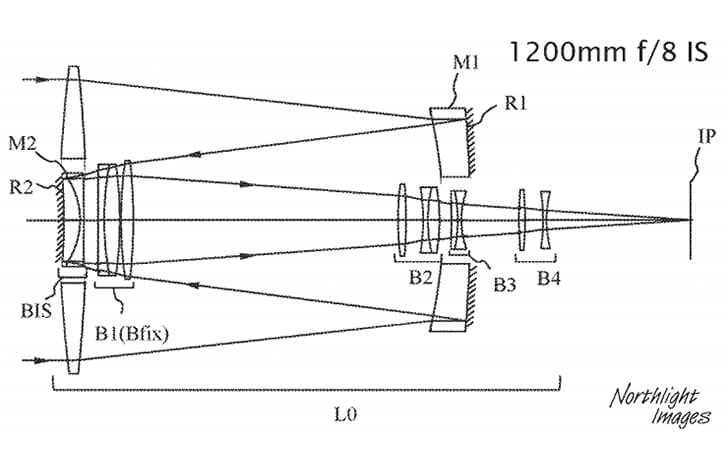Keith over at Northlight uncovered a USPTO patent showing various optical designs for catadioptric lenses, better known as mirror lenses. The advantages to mirror lenses are reduced size, weight, and cost at long focal lengths.
Some of the historical disadvantages to mirror lenses tend to be low contrast, fixed aperture, and doughnut bokeh. That's not to say that Canon hasn't improved or eliminated those issues in their designs.
Optical designs that appear in this patent:
- Canon RF 400mm f/3.6 IS
- Canon RF 800mm f/5 IS
- Canon RF 1200mm f/8 IS
- Canon RF 1200mm f/10.5 IS
- Canon RF 2000mm f/15 IS
Interestingly, a Canon RF 1200mm f/8 appears on my Canon RF lens roadmap. This patent may actually be part of future consumer products. However, I do have it reported as an L lens, so we'll have to wait and see on that one.
As Canon has shown with the RF 600mm f/11 IS STM and RF 800mm f/11 IS STM, they aren't afraid to bring slower long lenses to the masses. Not everyone can afford or justify the purchase of 5 figure big white lenses.


If this lens is really super-compact, it could be a very interesting option "just in case".
No matter what the photo snobs says, the donut bokeh do not kill an image. Especially if it's for a technical field or everything outside fine art.
It may be able to reduce donutting with lens corrections in software of course.
What would the Canon RF 2000mm f/15 IS be used for? I'm thinking it could be used for documenting distant birds in midday light on a tripod?
That said, the f/5 and f/3.6 are definitely intriguing. I wonder what sort of magic Canon has up their sleeve for these!
This would make an ideal design for any pure-sky astronomy photos, since everything is focused at infinity and there should be no bokeh balls. In fact, some telescopes use this design but don't have the extra corrective lenses (shown in the patent) after the 2nd mirror, shortly before focusing on the sensor. So this would be even better than some consumer telescopes optically. And that rumored future R body with active cooling (to keep the sensor heat & noise low) might be a nice partner for astro work with these lenses. I can see the rumors starting about a hopeful "astro" R... mount camera in the future.
You know, if Canon has gone this far, they could come out with a small RC (Ritchey-Chretien) lens design that would be amazing.
What a great option for Canon to bring to the R mount! :)
As for filling in the holes yourself, good luck with that!
How much would IS help for astro, when the lens is mounted on a sturdy tripod anyway?
I actually think they look kinda cool!!
cayenne
Not unless Topaz can come up with an AI donut filler?